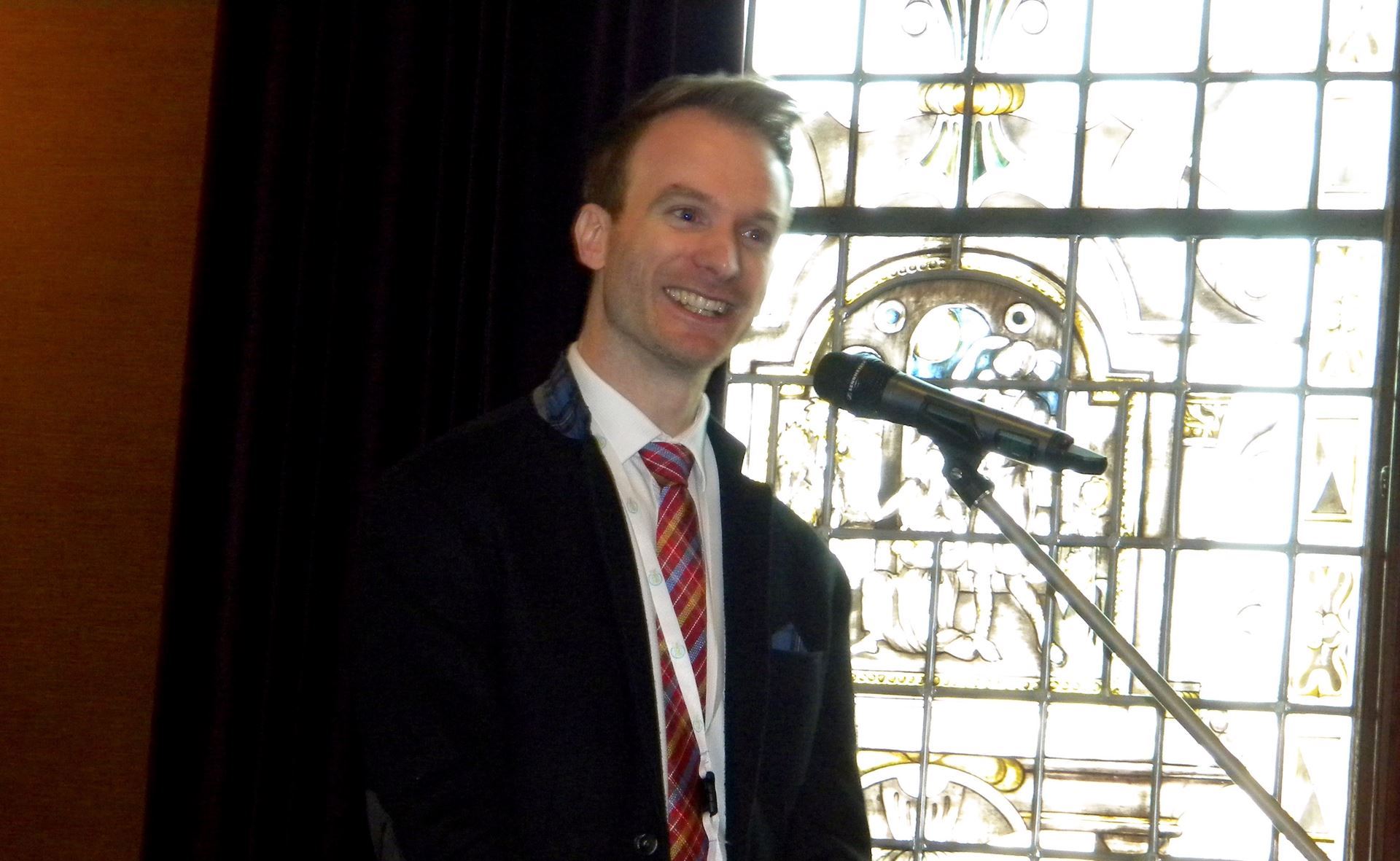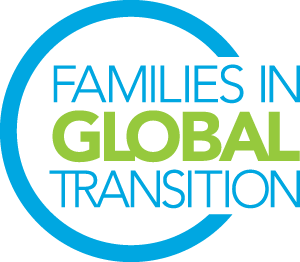
By Kilian Kröll, FIGT Board President
Opening Remarks March 10, 2016
Good morning, everyone, and welcome to the 2016 Families In Global Transition annual conference. My name is Kilian Kröll, and on behalf of the board of directors and FIGT Netherlands, it is a distinct honor to welcome all 200 attendees, presenters, sponsors and FIGT members to what is promising to be a very special weekend. We have traveled from 6 continents and 36 countries to be here -- a feat that amazes me year after year. And whether you're a long-time FIGT friend struggling to fight off your jetlag, or you're a first-time attendee curious to see what the FIGT community might offer you in your hometown of Amsterdam -- welcome.
At last year's conference in Washington DC, we announced what I consider one of the organization's bravest decisions in its history: after 18 years of hosting meetings and conferences in the United States for globally mobile people and those working with them, we're getting out of our comfort zone. Thanks to the great work and enthusiasm created by our global affiliate groups, we're now holding our first conference not just outside of the United States, but in a country that has provided a safe harbor and pioneering services for expatriate families for decades. Coming to the Netherlands feels both exhilarating and like a home-coming. Thank you, FIGT Netherlands and all our local partners, for your gracious welcome to Amsterdam.
I am not going to lie -- moving a conference like ours, organized by volunteers spread across the globe, to a new location and culture has not come without its challenges. For some (Americans) it's learning to read the 24-hour clock; for others it's been programming speakers with different needs in a venue we'd never seen before. From my view, however, our biggest challenge has been not just to replicate a great conference program, but to transport the feeling attendees have become familiar with at FIGT -- feeling connected at a reunion of strangers; feeling expanded at a place for simultaneous professional and personal growth; feeling understood in a refuge for those who have trouble answering the question "Where is home?"
The good news is that I alone cannot create this feeling -- it is up to each of us to take risks, move out of our comfort zones, strike up conversations and share and listen, make dinner plans with someone we just met, and connect with someone whose experience may seem quite different than our own. In our midst we have educators, artists, business owners, diplomats, parents, writers, academic researchers, accountants, missionaries, lawyers, coaches, counsellors, military and corporate employees, students and humanitarians -- all sharing in common: Empathy for, and Expertise about, crossing cultures and moving around the world. Two thirds of us are first-time attendees, half of us are FIGT members and 25% registered with an address in the Netherlands. As much as this conference is a reunion for some, it's a new beginning for all.
We chose this year's theme "Crossing Cultures: Bringing empathy and expertise to the evolving global family" to do several things:
1. To explain who FIGT is and what we care about -- namely bringing together a group of experts with a PhD in Life, with a concentration in global mobility and crossing cultures.
2. To expand the conversation from conventional expat support, to include people in all walks of life transitioning globally, as well as those working with them. This includes all the types of families we serve at international schools as well as those who fall beyond that spectrum -- from involuntary migrants to global families of choice, with or without kids.
And 3. To set the tone for this conference -- we bring our best professional work to the table, in addition to an open heart, a calm ear and the willingness to let ourselves be changed by this three-day experience.
With that in mind, I encourage you to engage in rich conversations; ask "Where are you from?" and see where it leads; challenge the ideas you hear; share your own expertise; experience a new point of view; and help us transport the feeling of intellectual curiosity and a true welcome to our new home.
Thank you.
Closing Remarks March 12, 2016
Goedenmiddag, everyone!
As we wrap up FIGT16, I would like to share three lesser-known facts about me:
1. As a native German and English speaker, raised by the sea, I subconsciously believe that I am automatically fluent in Dutch. Like, if someone asks me whether I understand Dutch, I say, of course! It’s just like German with English pronunciation and some “uis” and ggggs thrown in. However, the reality is that every time I am faced with Dutch people, I realize I don’t even know how to say, “Hello, how are you?” This makes me very sad. But right now there’s nothing I can do about it.
Therefore I will not be holding my closing speech in Dutch.
2. Even though I appear organized, I push every deadline. In some of my college courses I would have a 3-day grace period for the whole semester. The professors’ idea was that you could choose if you wanted to hand in one of your papers three days late, or three of your papers day late each -- but no more than 3 days in total for all papers that semester.
Well, I decided to maximize that rule by parceling the 3 days into 72 hour-segments and essentially handed in every single paper 6-12 hours after the stated deadline. I was always meticulous about writing the exact delay on the top of the paper. And I always got away with it.
What you may not know – and don’t tell anyone – is that in the fall of 2010, I submitted my very first FIGT proposal 6-12 hours late. By some technical fluke, the submission form was still active on the Monday after the Sunday deadline. I just thought, let’s see what happens! A few days later I got a phone call from Anne Copeland, the mastermind behind FIGT2011, who politely explained that really the only reason why she’s even looking at my proposal is because of the technical fluke, and she would have automatically dismissed it had I not proposed to speak on a topic that had never officially been on the FIGT program – namely how to support same-sex couples and LGBT families in global transition. She told me that she wasn’t sure how some people would react, but that she fully supported a discussion on this topic, as it was becoming increasingly relevant in the corporate, military and diplomatic sectors.
That year, Anne Copeland and I both took a chance. I had seven people at my Kitchen Table Conversation, all of whom knew way more than I did about this topic – but it was the start of a five-year relationship with this organization which has given me opportunities I would have never imagined at the time.
3. The third lesser-known fact about me is that I love graduations. In North America they are referred to as commencements. In particular, I love commencement processions. This is when students receiving their diplomas from colleges and universities, walk in their caps and gowns down the college path, led by their professors dressed in colorful academic regalia, to take their seats for the bestowment of their degree. After the speeches that acknowledge the tremendous feat it took to get to this point, the ceremony ends with the professors and students receding back through the crowd of teary-eyed parents and family members, now ready to commence a new chapter in their lives.
The dictionary definition of a “commencement” is literally
- the beginning of something.
I get goose bumps when I think about what it took for everyone in this room to get to this final moment of the conference – and all the doors that are just about to open.
At this moment, we are literally commencing new relationships, new projects, and refined visions for how we see the world and our place in it. I charge each of you to go forth and follow the path you are forging for yourself and those around you, to continue stepping outside the box of the familiar, to collaborate with people who share your passion, to ask for help when you know you don’t have the answer – Dutch lessons, anyone? – and to harness this powerful moment for a long time to come, and recall it every time you begin something, especially when you don’t know how.
As Hermann Hesse wrote, “there is a magic in each beginning”
-- thank you for letting me share this magical moment with you.
Before I let you go, I want to remind you have time to linger until 4:30, and then we all have to exit the building for real. And as the last time standing up here in my representative capacity, I wish you all safe journeys home – wherever that may be and however you may define it – and see you again next year at FIGT17!

